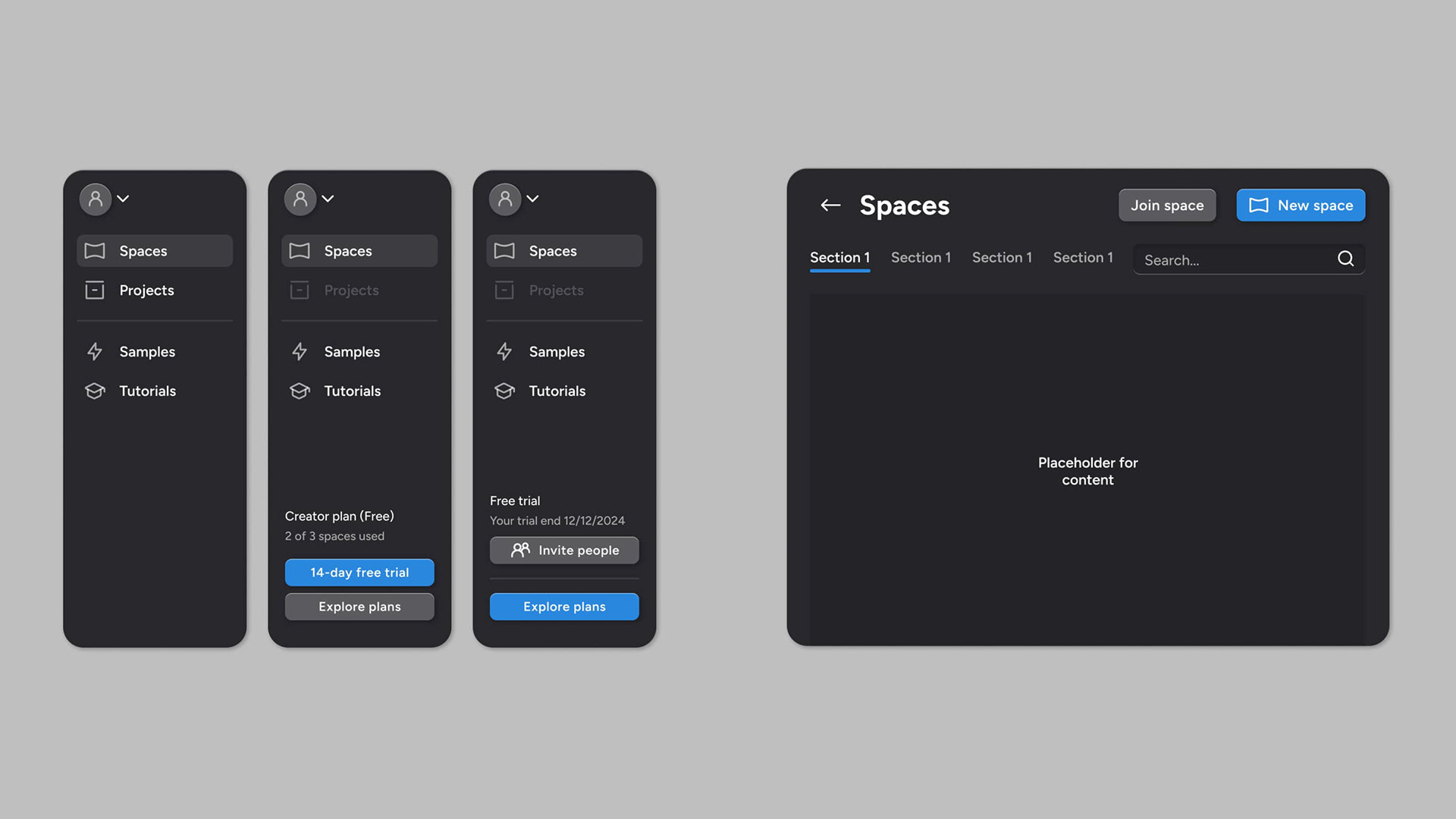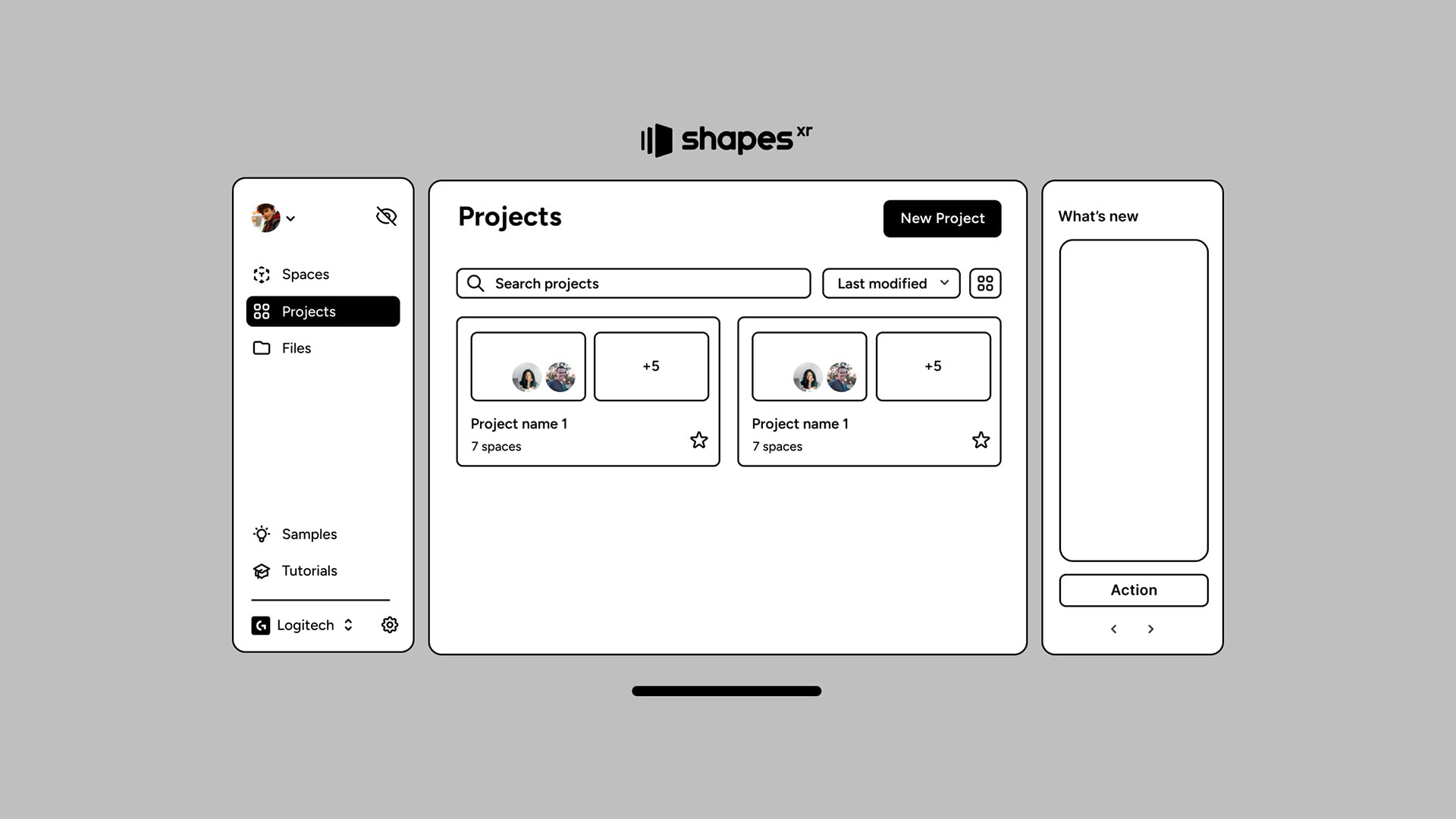Table of Contents
- Context
- Design Solution
- Key Metrics
- Design process
Context
ShapesXR is a tool for XR designers to create and share their designs directly in XR. As part of a complete UI revmap, we took the opportunity to address some navigation and discoverability issues in the Lobby. We noticed that users who engaged with Samples had a higher retention rate than those who did not. We identified some pain points in the current design and took steps to improve the discoverability of samples and tutorials, aiming to ultimately increase user retention. Additionally, we identified potential blockers during onboarding by access code, which we also addressed.
My role involved identifying pain points, creating the design, and managing a cross-functional team comprising developers and QA from the beginning to release.
Design Solution
The strategy behind this design was to use a recognizable structure—something familiar to users. Our users, who are highly familiar with desktop and mobile apps, are accustomed to the dashboard paradigm, with left menus, tabs, and dialogs being common navigation methods. This familiarity guided our design, providing an interface that resonates with users so they can navigate it confidently from the start.












Key Metrics
The primary goals of this design were to increase the percentage of users who visit samples and to boost the number of users who access the Lobby within the first 10 minutes of their initial session.
Thanks to a clearer and more intuitive architecture, the percentage of users visiting the samples increased by 10%. By aligning the new architecture closer to a typical desktop dashboard structure, we leveraged an existing pattern to help users navigate the Lobby effectively.
Regarding users accessing the Lobby within the first 10 minutes, the passthrough experience allowed them to view both their computer and the virtual panel simultaneously, resulting in a 15% increase in this metric.
Design Process
I addressed the problem by creating an inventory of all the pages, accompanied by a new information architecture. Following that, I conducted a heuristic evaluation to identify and prioritize issues in collaboration with the team.
Concerning the UI, I compiled an inventory of all existing components. Aligned with the front-end team, we opted not to change the UI framework but instead improve the current one.
Once the design system was established, I began designing all the new screens and conducted user testing on features such as the file uploading system. Simultaneously, I worked on designing the mobile version of the entire app.
Finally, I prepared the handoff for developers, encompassing all user flows and UI specifications.












Thank you for reading! 💙










